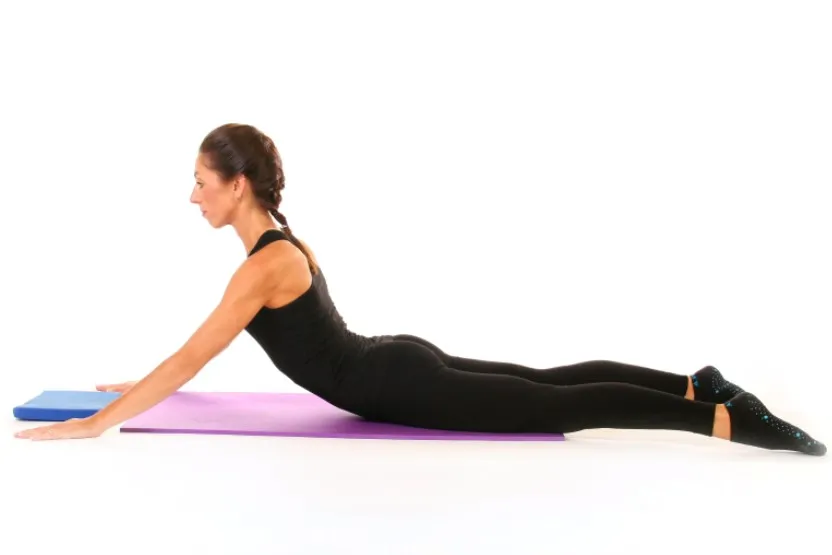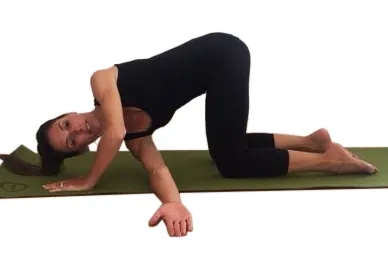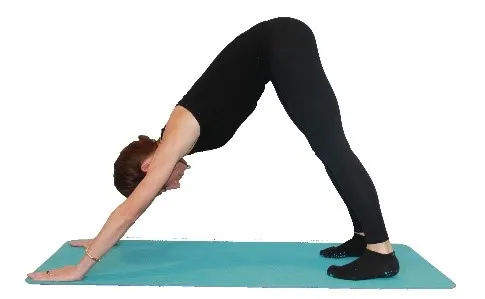Back pain might just be the most feared niggle of any athlete. It’s not until you suffer from an issue with your back that you realise just how much it impacts almost all of your day-to -day movements.
As a triathlete, you're training in not one but three different disciplines, so injury prevention and management should be at the forefront of any triathlete's mind if they're wanting to be at their most competitive.
Some would argue that, of triathlon's three disciplines (swimming, cycling and running), cycling puts your back in the most vulnerable position due to your posture in the saddle. This has been backed up by a study on Japanese triathletes that suggested that cycling is a major risk factor for low back pain in triathletes (1). And it’s not just advanced athletes who are suffering!
- What muscles do you use and tone when cycling?
- Strength training for cycling: 6 key exercises
- Back pain after the bike leg explained
Your longevity in the sport needs to be taken into consideration. You might be suffering from back pain so regularly that it has become ‘normal’ for you. These repetitive bouts on a bike with the lumbar spine in an excessively flexed position can lead to more serious injury such as trapped nerves or sciatica (irritation of the sciatic nerve which can cause severe pain down the lower back, glutes and legs) and may take weeks or longer to recover from.
How to prevent back pain
So, what’s the fix?
The general aims of a targeted exercise programme for the cyclist should be focussed on:
- Improve body awareness and position sense
- Improve mobility and flexibility to increase comfort and efficiency on the bike
- legs (longer hamstrings/powerful glutes)
- hips (strong hip flexors but not tight)
- back (free from the hamstring pull)
- neck (mobility from scapula stability)
- Balance the issues of muscle shortening that can be caused by long periods on the bike
- Improve core and pelvic control to improve efficiency
Bike set up
Firstly, you should look at how your bike is set up. Make sure the geometry of your bike suits your biomechanics. Handlebars should be at a comfortable reaching distance and your saddle should be set to a suitable height. If unsure, a professional at a good bike shop will be able to advise on the correct positioning.
Mobility and flexibility
Try the following sequence of 3 key exercises for mobility and flexibility:



In this sequence, we are using cobra (pic 1) to increase thoracic extension, thread the needle for thoracic mobility (Pic 2) and an adapted-downward dog (Pic 3) for hamstring flexibility and lumbar mobility. If this is used as a mobility warm-up and then combined with a range of well-known Pilates exercise for improved scapula stability to control the shoulder position, core strength to ensure stability on the bike, and a range of hip and strengthening exercises, then a tailored program can be delivered very quickly.
Posterior chain weakness
Next, you should look to train the posterior chain (this covers the entire back of your body, from the trapezius muscles - pair of large triangular muscles extending over the back of the neck and shoulders - down to the calves). Cycling does a great job at building the quadriceps, but the point of fatigue may lie in the other side of your legs, and surrounding muscles. Despite its great efficiency at burning calories and working muscles in the lower body, cycling does very little to train the back specifically.
If the back is arched for a long period of time and the muscles in that area aren’t prepared, you might find yourself more than a little sore the day after. While these things are often rectified with rest days in the early stages, age and overuse can turn this into a more prominent issue. We’d suggest exercises such as the deadlift, hyperextension and glute ham raise to strengthen the posterior chain.
Core weakness
Weakness in the core can also be an issue. It's often found that cyclists who complain of low back pain (LBP) often ride in a rounded lower spine position. On a more technical note we have seen that greater lumbar flexion and rotation in LBP group leads to reduced pelvic flexion and consequent reduced co-contraction of the lumbar multifidus muscle. Therefore, if we had an exercise programme that works on spinal postural awareness, mobility and inner core activation we can begin to address some of these issues.
Training the deeper muscles of the abdominal region can be done with planks or even vacuums (commonly seen in classic bodybuilding posing). Both can be performed daily, first thing in a morning. For planks, you might start with a goal of 3 sets of 30 second holds. Lay on the floor with elbows bent in front of you and legs full extended, raise the body so parallel to the floor and keep the buttocks tight to avoid the bottom shooting up. Hold position for the goal time.
These can be progressed by increasing the duration of holds over time. To perform a vacuum, exhale all the air in your stomach through your mouth and the stomach pulled in as far as possible. You can perform these, standing, lying or hunched over something like a sink. Hold for desired time.
Training Volume
You should also look to optimise how you train for an event. Duration of exercise and training volume seem to correlate with injury. Shorter-distance triathlons have lower injury rates and relatively minor injuries (4). With this in mind, triathletes may do well to periodise training leading up to a competition – rather than taking each training session to complete exhaustion. More research is needed to give more specific recommendations on training volume (5). For general purposes, this should be based on how much you can tolerate while remaining well recovered and injury free.
To conclude, completely avoiding injury is almost impossible in any sport. What we can do, is minimise risk by setting up a bike correctly, reducing shock absorption, strengthening the posterior chain and core and not overtraining.
Physio Glenn Withers is the founder of The Australian Physiotherapy and Pilates Institute. appihealthgroup.com
Glenn has worked in elite sport for over 22 years with Tottenham, Man U, Brentford FC, the EIS, AFL and much more. As an expert on LBP, pelvis, hip and sporting injuries, he is the clinical lead of all APPI treatment centres and education worldwide.
- What are the most common triathlon injuries, and how do you avoid them?
- Spinal stenosis: what it is and how to treat it
- Sports massage: What are the benefits of having a regular massage?
- 3 common musculoskeletal problems cycling causes and how to treat them
References:
(1) Manninen, J. and Kallinen, M., 1996. Low back pain and other overuse injuries in a group of Japanese triathletes. British Journal of Sports Medicine, 30(2), pp.134-139.
(2) Mellion, M., 1991. Common Cycling Injuries. Sports Medicine, 11(1), pp.52-70.
(3) Clarsen, B., Krosshaug, T. and Bahr, R., 2010. Overuse Injuries in Professional Road Cyclists. The American Journal of Sports Medicine, 38(12), pp.2494-2501.
(4) Journal of Science and Medicine in Sport, 2007. 340 The profile of triathlon injuries presenting for treatment during a triathlon race series. 10, p.114.
(5) Kienstra, C., Asken, T., Garcia, J., Lara, V. and Best, T., 2017. Triathlon Injuries: Transitioning from Prevalence to Prediction and Prevention. Current Sports Medicine Reports, 16(6), pp.397-403.